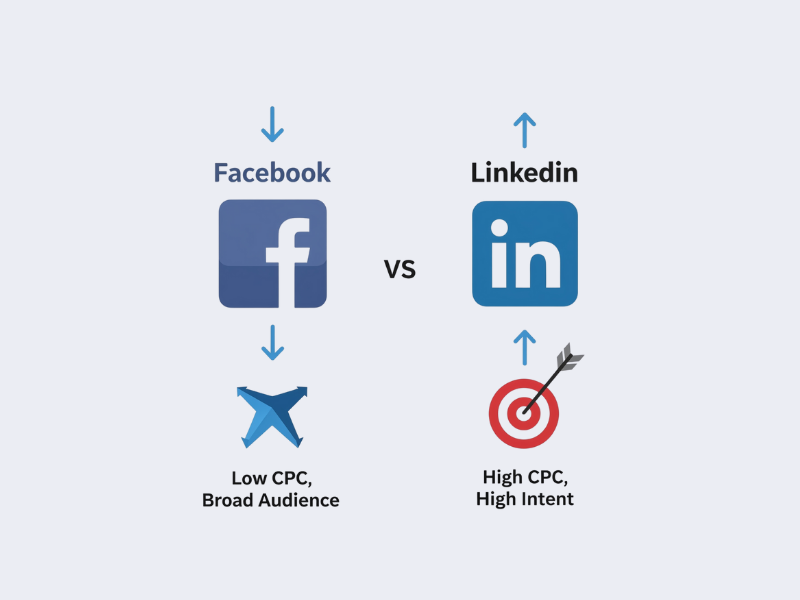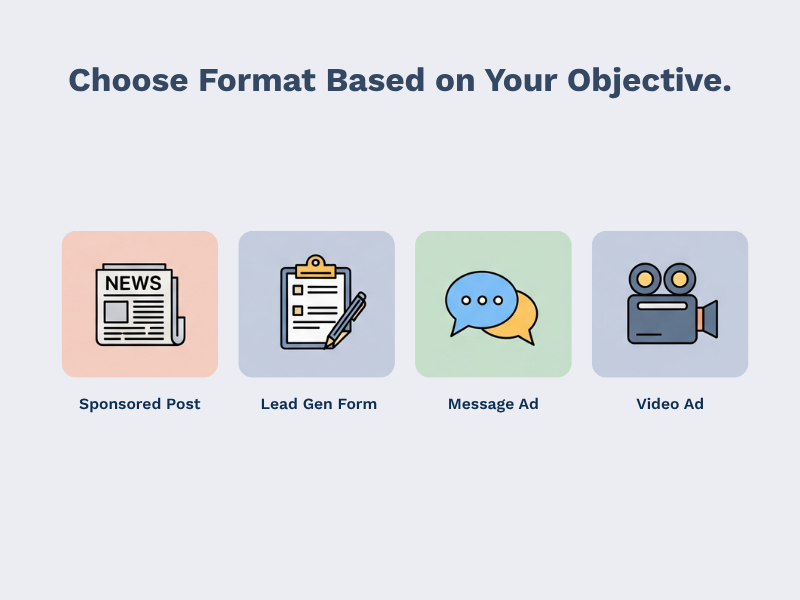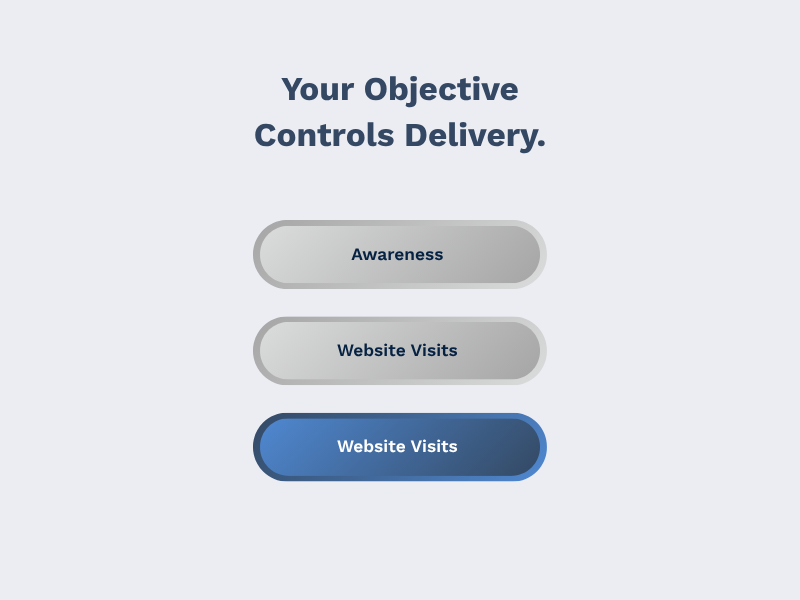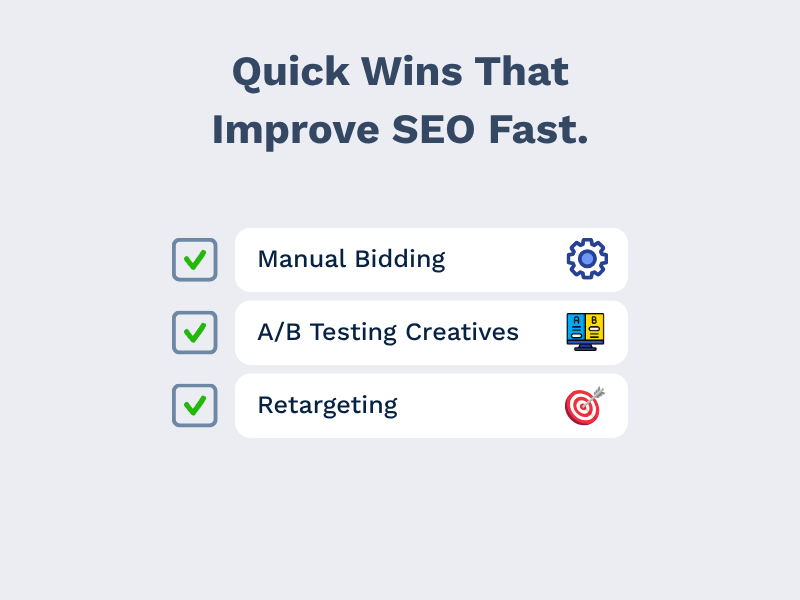An SME recently launched a promising campaign using LinkedIn ads, targeting senior decision-makers, setting a decent daily budget and running for weeks. The results? A handful of clicks, no leads and a campaign that drained the budget with nothing to show for it.
What went wrong?
Like many businesses, they focused heavily on audience targeting but completely overlooked a critical piece of the puzzle: choosing the right ad format and campaign objective. Without these aligned to their business goals, even the best audience strategy won’t deliver meaningful results.
Research shows that LinkedIn lead gen forms can boost conversion rates by up to 3%, and video ads generate five times more engagement than static formats. Yet, most SMEs default to single-image ads, missing out on the 13-15% lower cost-per-acquisition and higher conversion rates that come from aligning ad format and campaign objective. Choosing the right combination isn’t just a detail-it’s the difference between wasted spend and a high-performing LinkedIn campaign.
In this blog, we’ll explore why ad format selection and campaign objectives are often the most overlooked elements in LinkedIn advertising and how getting them right can be the difference between wasted spend and a high-performing campaign.

LinkedIn isn’t your average ad platform and that’s exactly why it works so well for B2B marketing. While the cost-per-click (CPC) is often higher than platforms like Facebook or Google, the intent behind each click is far stronger. You're reaching senior professionals, decision-makers and industry experts, people who are more likely to convert when the message is right.
What sets LinkedIn ads apart is their advanced targeting capabilities. You can filter your audience by job title, seniority level, company size, industry, skills and even member groups. This level of detail is a game-changer for SMEs looking to zero in on niche B2B segments.
However, here’s the catch: many SMEs get so focused on refining their audience that they overlook ad format selection and campaign objectives. These two settings play a major role in how ads are delivered and whether or not they convert. Without aligning them to your business goals, even the best audience targeting can fall flat.

When setting up LinkedIn ads, choosing the right format is just as important as choosing the right audience. Each format serves a different purpose, and if you mismatch them, you could be paying premium rates for underwhelming results.
Great for driving brand awareness, engagement and content promotion. Ideal if you're introducing your brand to new audiences or sharing thought leadership content.
These are built for conversions. Native lead capture forms allow users to submit their details without leaving LinkedIn, streamlining the journey and reducing drop-off.
Useful for direct, personalised outreach. They can feel intrusive if misused, but when done right, they prompt genuine conversations with targeted leads.
Perfect for storytelling, product showcases, or multi-step offers. These visual formats help build engagement over time.
Many SMEs inadvertently use engagement-driven formats like Sponsored Content when their actual goal is lead generation. Others select ad formats that don’t reflect how their audience prefers to engage, leading to poor performance and inflated costs.
Effective ad format selection isn’t just about aesthetics; it’s about matching format to intent.

Your campaign objective tells LinkedIn what you want your ads to achieve and influences how the algorithm delivers them. Misaligning your objective with your business goals is one of the most common mistakes SMEs make when running LinkedIn ads.
If you're aiming for leads but choose "Brand Awareness" or "Website Traffic" as your objective, LinkedIn will optimise your campaign for reach or clicks, not conversions. This can drain your budget without delivering results.
Your campaign objective is not just a checkbox; it sets the direction for everything that follows. When aligned correctly, it ensures your LinkedIn ads are working towards the outcomes that matter most.

Once you’ve chosen the right ad format and campaign objective, there are a few less obvious settings that can significantly influence the outcome of your LinkedIn ads. These often-overlooked levers can help you improve cost-efficiency, avoid fatigue and scale more effectively.
Running just one ad variation increases the risk of early ad fatigue. Test at least two different creatives within each campaign to see which performs better in terms of CTR, conversion rate and engagement. This also gives LinkedIn’s algorithm more data to optimise delivery.
Use Matched Audiences to re-engage people who’ve interacted with your site or content and apply Lookalike Targeting to reach similar professionals who haven’t yet discovered your brand. This layered strategy helps reduce your CPC while expanding your reach with higher-intent users.
These settings may seem small, but they play a critical role in the long-term success of your LinkedIn advertising strategy.
Running LinkedIn ads isn’t just about picking an audience and launching a campaign. To get real results, you need to focus on the fundamentals, ad format selection, campaign objectives and the lesser-known settings that influence delivery and cost-efficiency.
Before launching any campaign, take a step back and review your setup. Are you optimising for the right goal? Are your formats aligned with your audience’s behaviour? Are your settings giving you control, or just spending your budget?
Need help fine-tuning your LinkedIn ads? Let’s build a campaign that delivers real results.